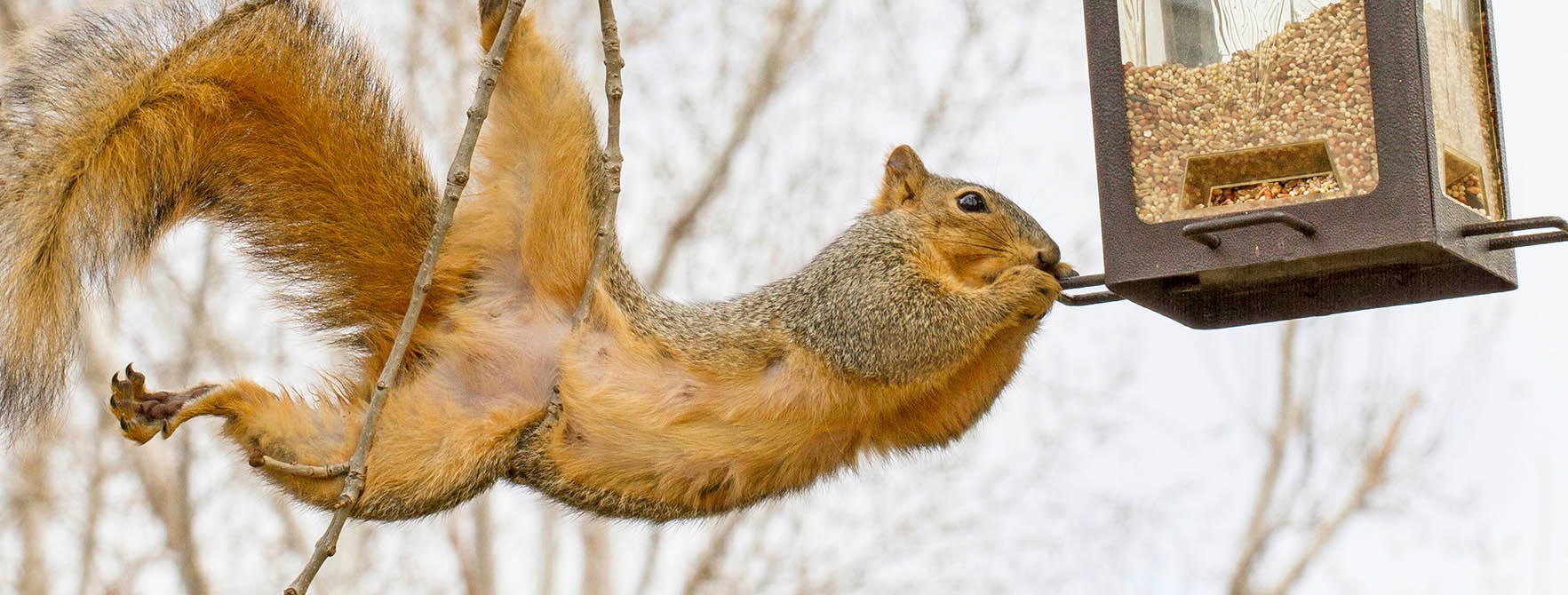
General Squirrel Facts
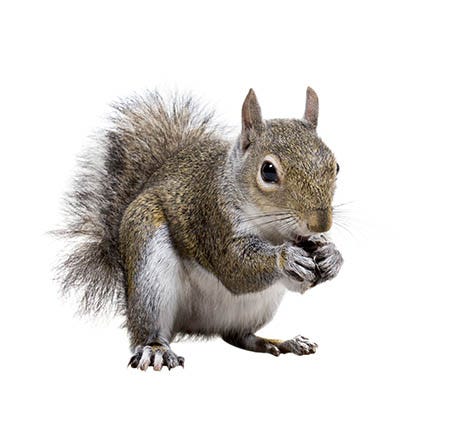
Tree Squirrel Classifications:
- Large tree squirrels (fox, eastern grey, western gray, tassel-eared)
- Pine squirrels (red, Douglas)
- Flying squirrels (southern, northern)
Average Size: 8–20 inches long; .33–1.5 lb in weight
Average Lifespan in the Wild: 6 years
Fun Facts
- A squirrel's teeth never stop growing, so squirrels must continually chew and gnaw to keep their teeth filed down.
- Squirrels use their fluffy tails to balance when traveling throughout treetops and electrical lines. A squirrel's tail can also serve as a parachute to ease falls - squirrels can fall from heights of up to 100 feet without injuring themselves.
- In an effort to deceive other animals and protect their real food caches, squirrels will pretend to bury food periodically, digging empty holes and covering them up with leaves.
- Although squirrels store food in different locations throughout their ranges, they do not always remember where they buried it. Unrecovered nuts and seeds give way to germinating trees, which is why squirrels are known to play an important role in growing and maintaining forest tree populations.
Identify Areas of Damage

Determining the nature and location of your damage will help you choose a squirrel repellent and know where to apply it.
Common squirrel damage includes:
- excavated bulbs and seeds
- stolen fruit and berries
- pilfered bird feeders
- chewed wood siding
- girdled trees
- small holes dug into your lawn for hoarding food
- nests in your attic
Choose the Best Squirrel Repellent
For each area of damage, use the information below to decide which repellent(s) are best for you. In areas of recurring pressure or high squirrel density, repellents should be applied as a preventative measure to keep squirrels away before the damage starts. In any case, layering multiple squirrel repelling solutions and being persistent will give you the best possible results.
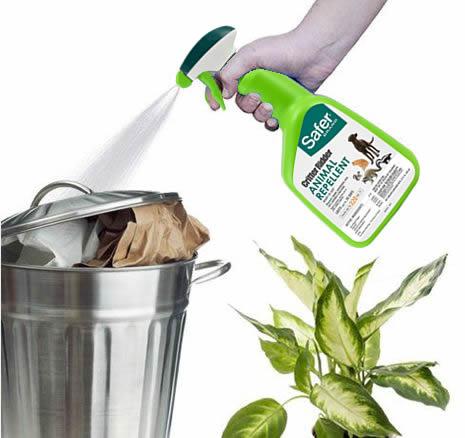
Liquid Squirrel Repellents
Best For: Keeping squirrels off of surfaces, or protection from destructive chewing and digging.
Spray liquid repellents thoroughly onto surfaces like:
- bird feeders
- bulbs
- trash bags/bins
- flowers
- roofing
- ornamentals
- gutters
- trees
TIPS: The best squirrel repellents contain pepper-based ingredients proven to repel squirrels by taste. Consistency and patience are important - reapply as directed to maintain repellency.
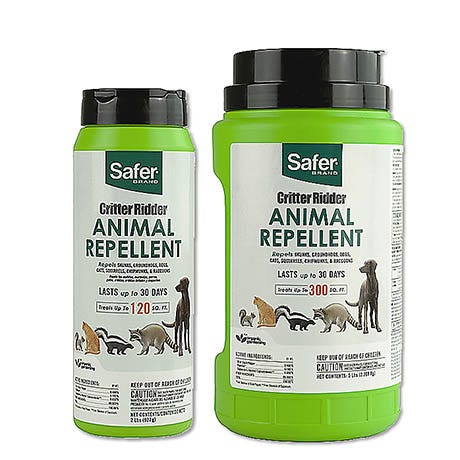
Granular Squirrel Repellents
Best For: Creating a repelling barrier to keep squirrels out of desired areas. Sprinkle capsaicin-based granules on or around areas like:
- attics
- flowerbeds
- crawl spaces
- tree bases
- pathways
- gardens
- house perimeters
- ground cover
TIPS: Protect planted bulbs or seeds by sprinkling granules onto the soil or mulch in which they're buried. Granular repellents are the only repellents that can be used indoors or applied in temperatures under 40°F.
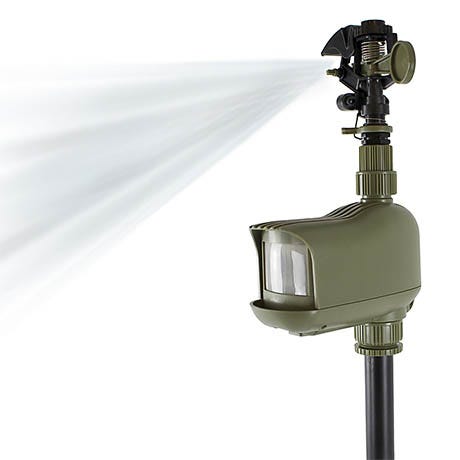
Electronic Repellents
Best For: Driving away tenacious squirrels with startling bursts of water. Because of their eco-friendly and versatile nature, electronic repellents can be used to protect virtually any area, such as:
- berry patches
- parks
- trees
- vegetable gardens
- yards/lawns
- pathways
- flowerbeds
- property entryways
- structures
TIPS: Electronics are best used as your second layer of defense for squirrels. While they're extremely effective, they tend to be more consistent in repelling larger critters - because they rely on sight to activate. In order to see smaller animals like squirrels, use the highest possible sensitivity setting that your device offers.
Apply as Directed
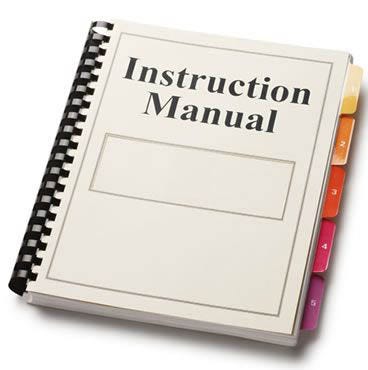
The back panels of household products are often overlooked. In the case of animal repellents, it is necessary to fully understand where, when and how to apply them in order for them to work properly. Key points to keep in mind include:
- Liquid and granular repellents must be reapplied as often as instructed in order to maintain repellency. TIP: Mark application days on your calendar to maintain a proper schedule.
- Apply repellents in dry conditions, and pay attention to the weather; repellents will need to be reapplied after prolonged or heavy rainfall.
- Instructions should dictate how much repellent to use per square foot. Follow these guidelines to ensure effectiveness.
- Setting up an electronic repellent is easy, but there are critical steps that should be taken in order for it to be effective. For example, the sensor should be pointed in the direction that squirrels are approaching.
Remove Attractants
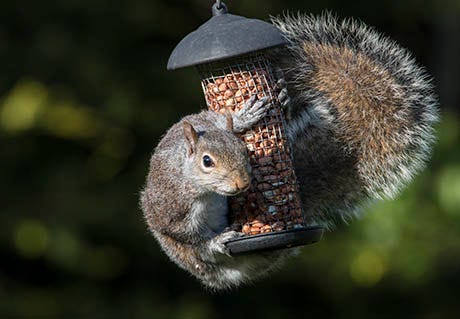
Squirrel repellents work best when they are not competing with nearby attractants. Maintain the cleanliness of your yard and remove potential food sources in the following ways:
- Rake up fallen berries, nuts, acorns, fruits and birdseed.
- Clean up any leftover food, drinks or pet food.
- Remove trash and secure garbage bins.
- Remove bird feeders, or replace your birdseed with a type that squirrels dislike, like safflower or nyger.
Expert Tips
- Once squirrels make their nests and establish habits in your yard, they are very difficult to control. This is why squirrel repellents should be used as a preventative measure, or at the very first signs of squirrel damage.
- It's important to be patient and consistent with your squirrel repelling strategy. Although liquid and granular repellents are effective immediately, their effectiveness relies on a squirrel's interaction with them. It may take several interactions with the repellent for the squirrel to associate the unpleasant taste and irritation with the protected area.
- Squirrels do the most damage when they are eating or gnawing on birdseed, plants, siding, wires, etc. The best squirrel repellents tackle these problems head-on by targeting and irritating a squirrel's taste buds. Look for repellents with capsaicin and other pepper-based ingredients that are proven to deter squirrels in this way.
- Liquid repellent concentrates are great for protecting bulbs from squirrels - simply dip the bulbs into the concentrated solution before planting. As a second layer of protection, bury the bulbs in a layer of sharp mulch through which squirrels don't like to dig.
- Take steps toward excluding squirrels from access to your home, bird feeders and/or garden: seal up any holes on the exterior of your house; install a chimney guard; enclose gardens within wire mesh or chicken wire; trim tree branches that extend within 10 feet of structures; cover nearby power lines with plastic tubing so squirrels cannot run across.
- Because squirrels are extremely persistent, Safer® Brand recommends using multiple squirrel repellent products to protect your yard.

